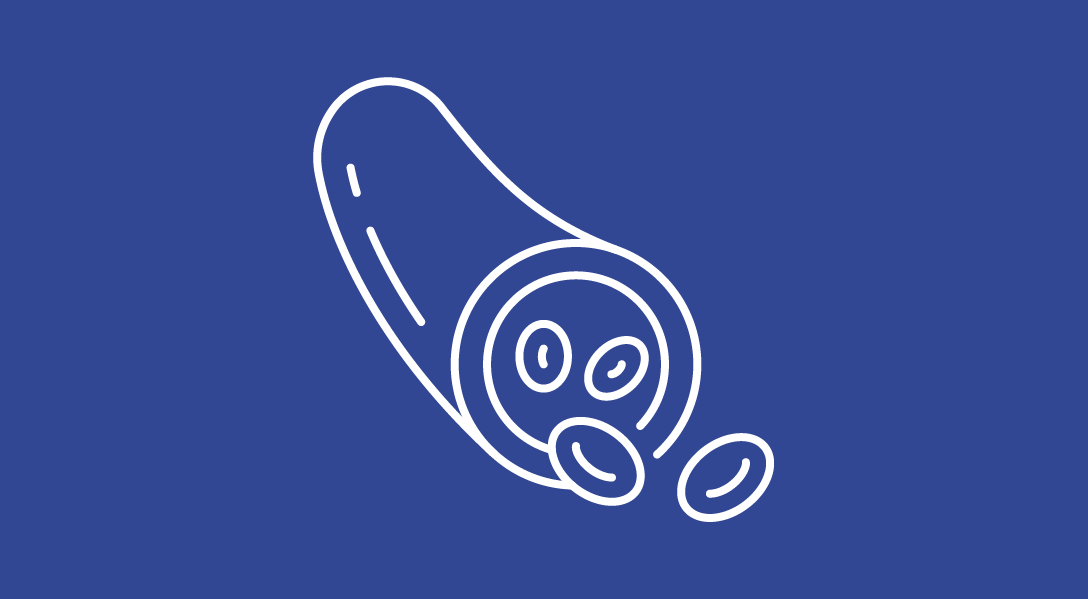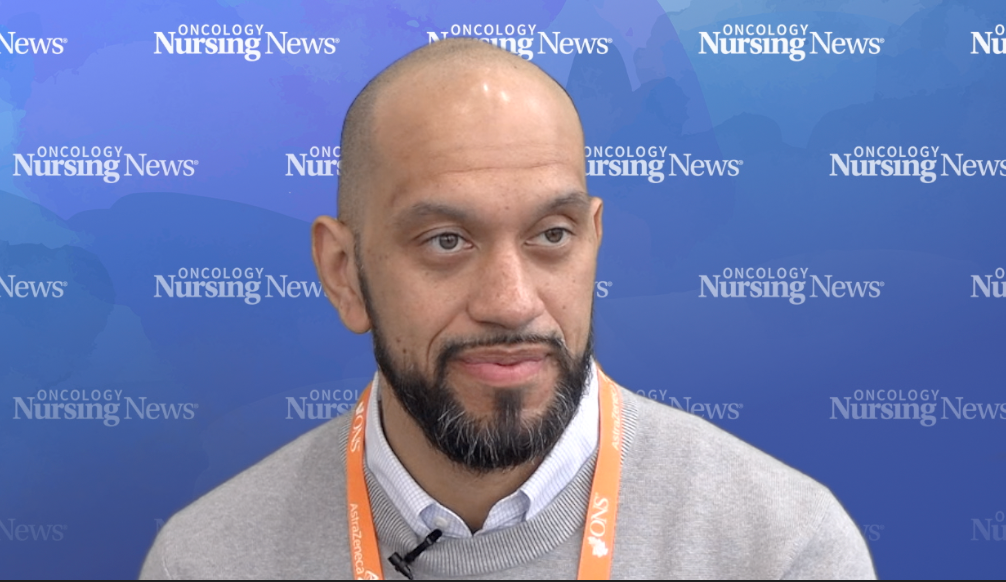PARP Inhibitors May Be a Promising Treatment Strategy in Advanced Uterine Leiomyosarcoma
Kjersten Dosumu, DNP, MS, AGPCNP-BC, explains why investigators are optimistic about treating uterine leiomyosarcoma with olaparib and temozolomide.
Kjersten Dosumu, DNP, MS, AGPCNP-BC

Findings from a phase 2 clinical trial (NCT03880019) recently published in the Journal of Clinical Oncology demonstrated that combined treatment with olaparib (Lynparza) and temozolomide led to a 27% objective response rate in patients with advanced, pretreated uterine leiomyosarcoma. The trial met its primary end point.
The median progression-free survival was 6.9 months (95% CI, 5.4-not estimable [NE]). In addition, the trial showed that 31% of these patients had a homologous recombination repair gene and 50% were homologous recombination-deficient by the RAD51 foci formation assay—suggesting that there may be actionable targets within this sarcoma subtype.
According to Kjersten Dosumu, DNP, MS, AGPCNP-BC, these results are exciting for sarcoma specialists.
“This is a tough disease to manage; it often comes back,” she told Oncology Nursing News. “Even though surgery will remove a lot of the uterine leiomyosarcoma, about 50% comes back and metastasizes.”
Dosumu is a nurse practitioner at Columbia and works with Matthew Ingham, MD, assistant professor of medicine at New York Presbyterian Hospital/Columbia University Medical Center, and investigator on the clinical trial. In an interview, Dosumu offered her perspective on how to interpret the findings from this research. Dosumu does not work in clinical research but supports patients through standard-of-care therapies.
“The study itself only had 22 participants,” she said, “that mean that 6 people responded for at least 6 months. Anyone hearing this [might wonder] why on earth is that even interesting? For sarcoma, it is so interesting.”
“It is tough to find a good tumor response to any of the standard drugs. Even though 27% does sound low, we have a couple of patients that are still on the study 30 months later—a long time—and they have had a very good response. The response rate varies for every person, obviously, 16 of [the patients] did not respond as well, or as long, but 27% is actually a good response rate,” she added.
Oncology Nursing News: Can you talk about the use of PARP inhibitors in this setting? Why did investigators decide to leverage this class of drugs?
Dosumu: This combination of these two drugs, olaparib and temozolomide, had been studied kind of individually in other types of diseases. Olaparib is a PARP, or a poly adenosine diphosphate-ribose polymerase, inhibitor. PARP helps to mediate DNA repair when it has been damaged. PARP inhibitors stop the DNA from repairing, basically. A very simple way of looking at it is that it stops the repair so that these cancer cells are unable to continue to rebuild and repair themselves. Chemotherapies might kill them off briefly or stop the cell growth briefly, but they do not stop the repairing.
Temozolomide was added in because it is an alkylating agent, so it helps to increase the activity of the olaparib, or the PARP inhibitor.
How common is uterine leiomyosarcoma?
Sarcomas are rare cancers. Approximately 1% of cancers are sarcomas. There are over 150 types of sarcomas or subtypes. Uterine leiomyosarcoma, or ULMS, [represents] about 20% to 30% of sarcomas. The nastiness of sarcoma is that it does not distinguish between where it wants to grow, it can be anywhere.
Uterine leiomyosarcoma is affecting a large population of the patients that we see.
That is what led Dr. Ingram into wanting to try to find something [new] to do. Our standard chemotherapies were not working well; they worked for a time, but the disease was figuring out ways to work around and repair itself.
What treatments exist for patients with these diseases? What was the impetus for designing this trial?
In general, oncology has taken such big steps forward in the past 9 to 10 years in finding more targeted therapies and immunotherapies, but leiomyosarcomas do not really respond well to immunotherapies, unfortunately, because they do not have a large mutational tumor burden.
This study allowed for [patients to have received] at least 1 previous line of therapy before enrolling. Every single person had gone through the standard therapies, progressed, and needed another [treatment] option.
The main goal of looking outside of [our standard-of-care therapies] is that there were not a lot of benefits [with those regimens]. The common therapies for sarcomas are doxorubicin or doxil-based treatment, the gemcitabine/docetaxel combination, and a medication called trabectedin [Yondelis]. Some people do get responses from those [treatments], but they are not long-lasting, and a lot of patients are not having responses. There was a need to find something more targeted. Immunotherapies were not working.
Dr. Ingham [had previously authored] a paper with 12 participants [receiving] nivolumab. Nobody responded. [For] an immunotherapy response, you typically need a high tumor mutational burden, but uterine leiomyosarcoma and [many] sarcomas do not really have that gene in their sequencing.
What do you believe is the key takeaway for nursing professionals?
For nurses out there, the benefits of the targeted therapies are nice, because a lot of them do not come with many adverse effects. The side effect profile is much easier to treat.
A lot of the side effects are neutropenia and thrombocytopenia—but if held for a week or so, [patients] rebound and recover, and they do well. There is not a lot of the weight loss, nausea, or vomiting that come with some of the other medications.
As a nurse practitioner, what are some of the greatest challenges in caring for patients with uterine sarcomas?
There was a patient of ours that did not get this therapy in time.
She was a mom to eight kids, and she was young. She had had what she thought was curable, through surgery. She came to us, just as follow-up, and we decided to do some therapy for her—we gave her chemotherapy [but] her disease grew through that. Then we gave her another chemotherapy and it grew through that. We [tried] targeted therapies that we thought might work, but they were not olaparib [and] temozolomide.
Before we were able to get her on to trial, she had, unfortunately, progressed too much and was too sick to start the trial.
I feel like we have so many younger people developing cancers, and I think that there are a lot of aggressive types forming. As a nurse practitioner in the field, I am not doing the research, but it gives me so much more hope for the patients that there is more coming out of research that is not as toxic and that come with a lot more flexibility.
In the nursing world, we do a lot of the symptom management, and we help patients recover from the chemotherapy. Having this as an option has been really nice, because my patients on this are really thriving, they are doing well in their lives, they are feeling well, their disease is controlled, and some of it is shrinking. It is impressive.
Reference
Ingham M, Allred JB, Chen L, et al. Phase II study of olaparib and temozolomide for advanced uterine leiomyosarcoma (NCI Protocol 10250). J Clin Oncol. Published July 19, 2023. doi:10.1200/JCO.23.00402




